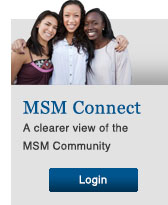Case Report Abstract Submission
Case Report Abstracts must include the following: (see example below)
| Abstract Information | Case Report Abstract Text |
|---|---|
|
|
Submit an Abstract
Review Eligibility Requirements and Submissions Guidelines.
- Case Report Abstracts may be no longer than 300 words.
- Do not include references, credits or grant support.
- Tables and images may not be included in the abstract.
- Proofread very carefully for formatting, spelling, and grammar before submission.
Case Report Abstract Review and Acceptance
- Case Report Abstracts will be reviewed by members of the Morehouse and Emory School of Medicine faculty.
- Each abstract will be evaluated by reviewers and selection based on the abstract selection criteria listed above.
- Any abstracts submitted not meeting the criteria and adhering to these guidelines will not be selected.
Notifications
The corresponding author will receive e-mail notification of abstract status on March 9, 2020.
Case Report Abstract Example
Title: Oral mucosal neuroma presenting in a patient with Clove syndrome
Author (first, middle, last name, degree):
Program/Specialty:
Institutional Affiliation:
Preceptor/Research Mentor (first, middle, last name):
Other Resident/Fellow authors (first, middle, last name):
Affiliation (Program & Institution):
Introduction: CLOVE syndrome is a disorder comprising congenital lipomatous overgrowth, vascular malformations and epidermal nevi. It is a recently defined syndrome following reclassification of Proteus syndrome, which is a progressive disease, in contrast to the non-progressive nature of CLOVE. Vascular malformations in CLOVE are typically truncal and there is disregulated adipose tissue deposition, scoliosis and enlarged bony structures. We describe a female with features of CLOVE syndrome and mucosal neuroma of the tongue, not previously described in association with CLOVE syndrome.
Case: A 14-year-old girl was referred for management of dental trauma, crowding and a 7-month history of three asymptomatic dorsal tongue lesions. Clinical examination revealed skeletal and dental asymmetry with midline shift to the left, enlargement of the maxilla with right-sided macroglosia. There was an enamel-dentine fracture 11, and 23 was buccally displaced and causing soft tissue trauma. There were three soft tissue lesions on the dorsum of the tongue measuring 5 mm in diameter with no ulceration or erythema. Comprehensive dental care under general anesthesia was undertaken including excisional biopsy of the hyperplastic tongue tissue. Histopathology confirmed mucosal neuroma. Mucosal neuromas have not been previously reported in CLOVE syndrome and may be a new finding or an indication the patient has Multiple Endocrine Neoplasia type 2B for which investigations are currently under way.
Discussion: Dentists may be the first clinicians to detect oral lesions which present as part of a systemic condition. Further investigation is required to determine the etiology of mucosal neuroma in this patient.

